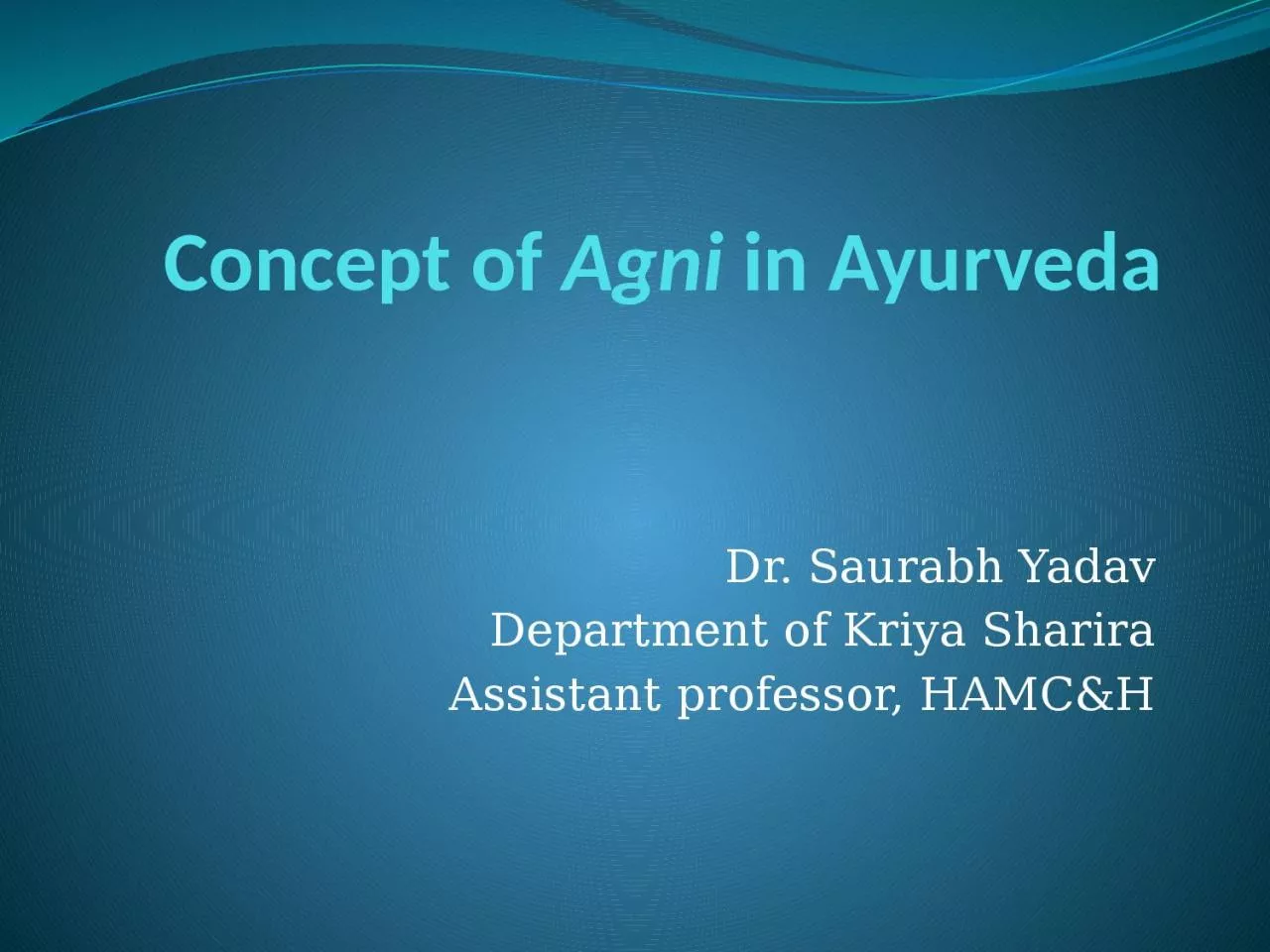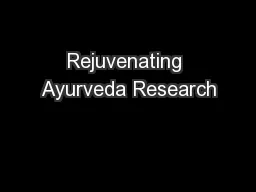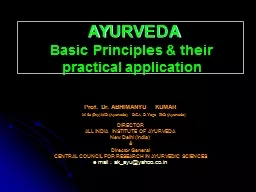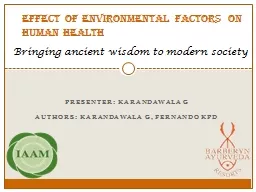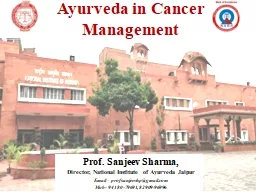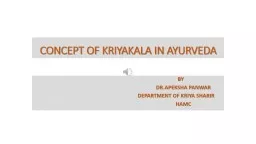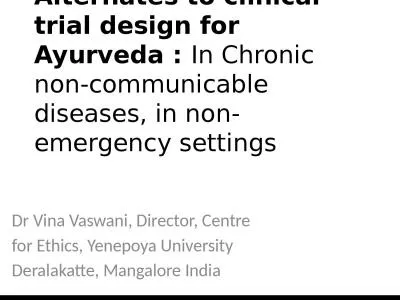PPT-Concept of Agni in Ayurveda
Author : hanah | Published Date : 2024-03-13
Dr Saurabh Yadav Department of Kriya Sharira Assistant professor HAMCampH Introduction of Agni Ayurveda has described the set of important factors responsible
Presentation Embed Code
Download Presentation
Download Presentation The PPT/PDF document "Concept of Agni in Ayurveda" is the property of its rightful owner. Permission is granted to download and print the materials on this website for personal, non-commercial use only, and to display it on your personal computer provided you do not modify the materials and that you retain all copyright notices contained in the materials. By downloading content from our website, you accept the terms of this agreement.
Concept of Agni in Ayurveda: Transcript
Dr Saurabh Yadav Department of Kriya Sharira Assistant professor HAMCampH Introduction of Agni Ayurveda has described the set of important factors responsible for digestion amp metabolism in our body as . . . SHILAJIT CAPSULES. Anti Ageing. Anti Diabetes. Anti Asthmatic. Anti Stress . Anti Arthritis. Shilajit for Increases Immunity. Shilajit for Sexual Dysfunction. Shilajit for Improve digestion. -the Rasayana way. Dr. . Padma. . Venkat. IHST. , Bangalore. padma.venkat@frlht.org. Samyukthi. , 1 Aug 2013. Just that the ways . of . ‘knowing’ are different. The Common object of observation for both Ayurveda & Biomedicine is Nature and Humans. Basic Principles & their practical application. Prof. Dr. ABHIMANYU KUMAR. . M Sc (Psy) MD (Ayurveda), DCA, D.Yoga, PhD (Ayurveda). DIRECTOR. ALL INDIA INSTITUTE OF AYURVEDA. New Delhi (India). . Best Blood Purifier. To cut costs, many manufacturers use Neem leaves powder to fill in capsules. . The Dosage of herbs powder for its therapeutic benefits is 3 to 6 grams. . Presenter: . KarandawAla. G. Authors: . KarandawAla. . G,. . Fernando . KPD . . Bringing ancient wisdom to modern society. Medical concerns brought about by environmental factors. Need for preventive medicine. Three Part Series. ॐ. Jazell. Choi-. Andujar. Ayurvedic. Wellness Practitioner. Introduction to . Ayurveda. Syllabus. Ayurveda 101. This course will serve to introduction Ayurveda to the general public. The class will be dedicated to teaching the basic . En tant que mère, votre but est de créer un environnement optimal pour le développement de votre enfant. visitez notre site Web http://lessencce.com/fr/ . . SHILAJIT CAPSULES. Anti Ageing. Anti Diabetes. Anti Asthmatic. Anti Stress . Anti Arthritis. Shilajit for Increases Immunity. Shilajit for Sexual Dysfunction. Shilajit for Improve digestion. Associate . Professor ( Biological Sciences). New York City College of Technology. Brooklyn , NY. 1. OPTIMAL HEALTH. Practice of . ayurveda. dates back to 5000 years. Officially recognized by the World Health Organization in 1976. by Premal Patel MD 8009536424 BANYANBOTANICALSCOM Chapter 1 What is AyurvedaChapter 2 Prakriti151Your ConstitutionChapter 3 Vikiriti151Your ImbalancesChapter 4 How Lifestyle In31uences Dosha Prof. . Sanjeev Sharma,. Director, National Institute of . Ayurveda Jaipur. Email – profsanjeevhp@gmail.com. Mob- 94180-79691, . 82909-96996. Present . Era . belongs to:. Era of Knowledge . /Science. BY. DR.APEKSHA PANWAR. DEPARTMENT OF KRIYA SHARIR. In Chronic non-communicable diseases, in non-emergency settings. . Dr Vina Vaswani, Director, Centre . for Ethics, Yenepoya University. Deralakatte. , Mangalore India. Ayurveda: The original Indian system of medicine. Sandra Begović, . owner. . and. CEO at . GitaZen. . holistic. . center. LIFE SPAN vs. QUALITY OF LIFE. *. can. life . span. . and. . quality. . of. . life. . go. . along. *. what. is . our.
Download Document
Here is the link to download the presentation.
"Concept of Agni in Ayurveda"The content belongs to its owner. You may download and print it for personal use, without modification, and keep all copyright notices. By downloading, you agree to these terms.
Related Documents

